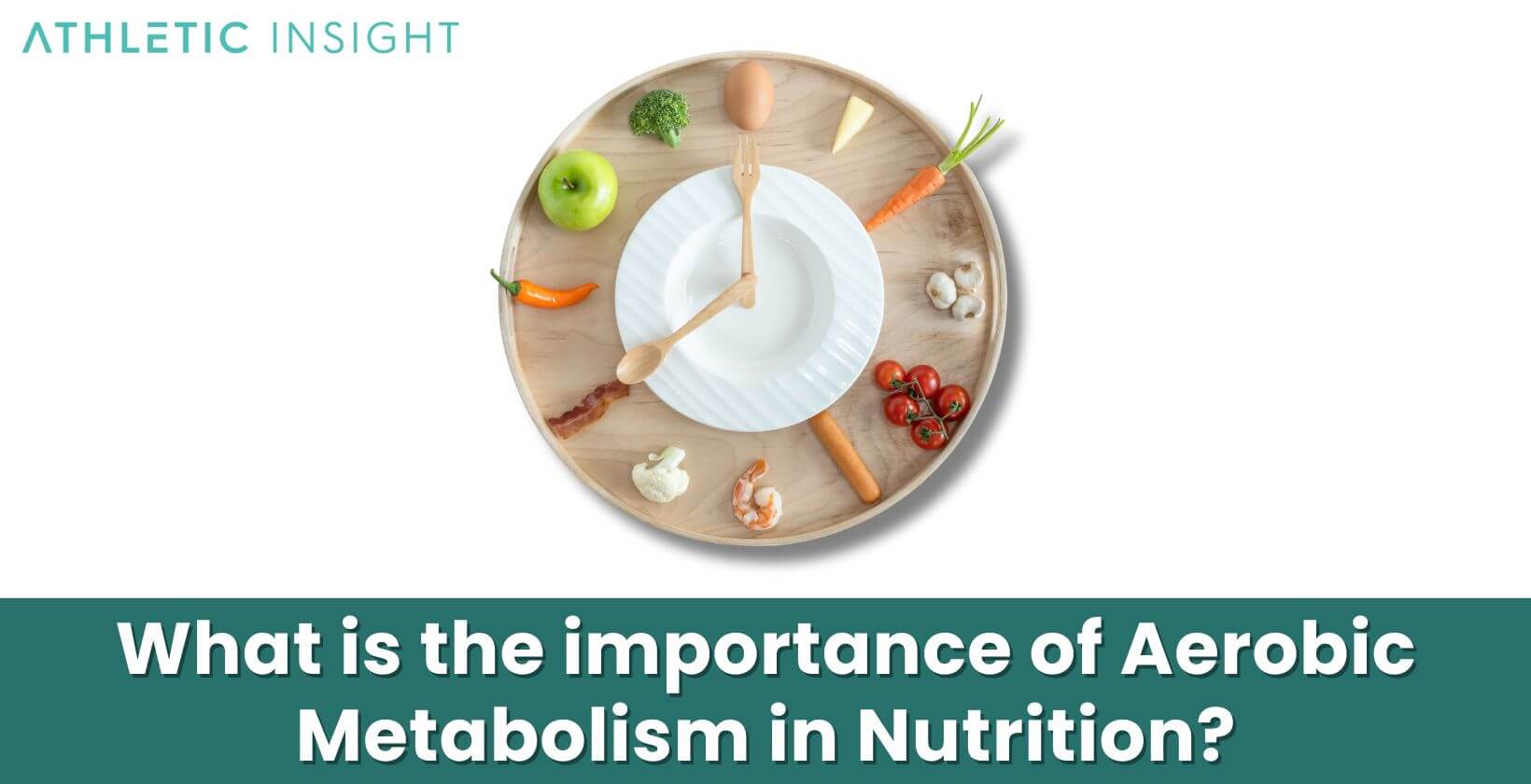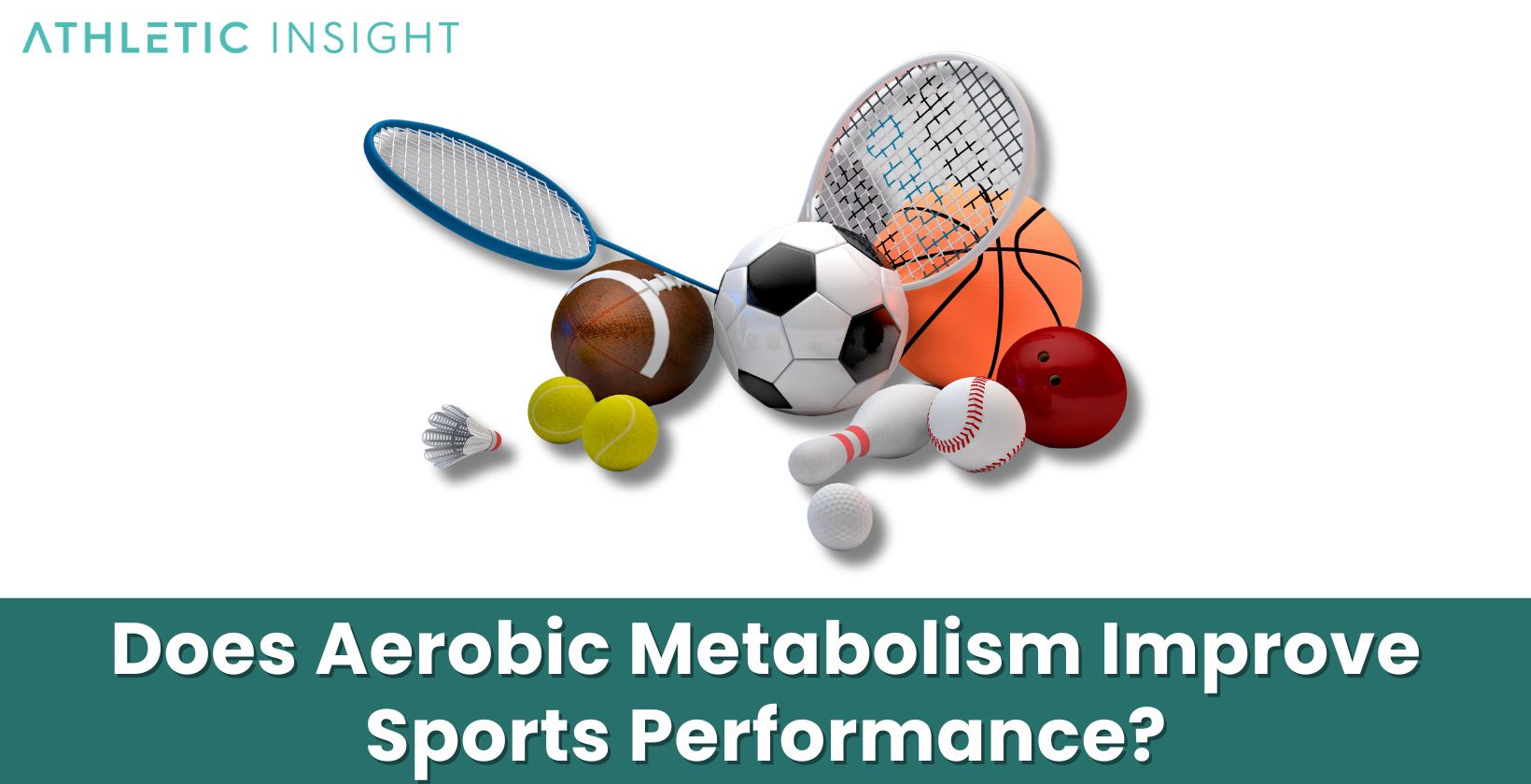Aerobic metabolism, a cornerstone in understanding human energy production, hinges on the principle of oxygen usage. As you breathe, your cells harness this inhaled oxygen to unlock the energy stored in the food you eat. This method stands distinct from anaerobic metabolism, an alternative energy-producing system that functions without relying on oxygen. Grasping this distinction is foundational for understanding the intricacies of human metabolism, nutrition, and physical exertion.
The word “metabolism” is often associated with weight loss or gain, but its essence stretches far beyond that. It’s the sum of all chemical reactions in our bodies, responsible for turning food into energy, growing, repairing cells, and other vital functions. Within this broad spectrum, the spotlight here is on the aerobic aspect of metabolism – the oxygen-reliant mechanism.
What is Aerobic Metabolism?
At its core, aerobic metabolism is a sophisticated biochemical process. It signifies the body’s approach to generate energy by burning carbohydrates, fats, and proteins, all in the presence of oxygen. Predominantly taking place in the cell’s mitochondria, this procedure yields ATP (adenosine triphosphate) – the primary energy currency in our bodies. Compared to other metabolic pathways, especially its anaerobic counterpart, aerobic metabolism stands out for its efficiency.

Understanding aerobic metabolism involves peeling back layers of cellular activities. It starts with the uptake of nutrients, progresses through several stages of chemical breakdown, and concludes with the production of energy. This energy then fuels everything from our thoughts to our movements. The role of oxygen here is crucial, facilitating the efficient breakdown of nutrients.
What is the other term for Aerobic Metabolism?
The concept of aerobic metabolism aligns closely with another term, cellular respiration. Many experts use these terms interchangeably, although cellular respiration offers a more detailed lens. It emphasizes the cellular processes, particularly highlighting how cells harness oxygen to break down nutrients and generate ATP.
Both terms are foundational in biology and physiology. While aerobic metabolism broadly paints the picture of energy production with oxygen, cellular respiration dives into the specifics, detailing the sequential steps of this complex dance of molecules within our cells. The intricacies of these processes underscore their significance in life’s sustenance.
How does Aerobic Metabolism differ from Anaerobic Metabolism?
Aerobic and anaerobic metabolism are the two main avenues our bodies use to derive energy. The crux of their difference lies in oxygen. Aerobic metabolism operates with oxygen, producing energy efficiently and yielding byproducts like carbon dioxide and water. Its capability to provide substantial energy makes it the primary system active during prolonged physical activities.
On the flip side, anaerobic metabolism kicks in when oxygen levels are low or depleted. It’s a rapid response system, supplying energy during short bursts of intense activities like sprinting. However, its byproduct, lactic acid, can accumulate in muscles, leading to fatigue. The divergence between these metabolic routes is not just about oxygen but also their efficiency, duration, and byproducts.
What is the relation between Aerobic Metabolism and Metabolism?
Metabolism is a broad umbrella term encompassing every biochemical reaction taking place in our bodies, aiming to maintain the living state of cells and the organism. It’s divided into two primary categories: catabolism, the breakdown of compounds to release energy, and anabolism, the synthesis of compounds needed by cells. Within this grand framework of metabolic activities, aerobic metabolism finds its niche as a specific process.
Aerobic metabolism is a subset, a particular form of catabolic activity that emphasizes energy production in the presence of oxygen. It’s like a specialized worker in a vast industrial complex. While the broader factory (metabolism) has many roles and responsibilities, this worker (aerobic metabolism) has expertise in one specific task – generating energy efficiently using oxygen.
What is the importance of Aerobic Metabolism in Nutrition?
In the realm of nutrition, the significance of aerobic metabolism is important. Nutrients, the building blocks we obtain from food, primarily carbohydrates, fats, and proteins, are potential energy sources. However, to tap into this energy, our body needs processes to convert these nutrients. Here’s where aerobic metabolism steps in, orchestrating the conversion of these food components into usable energy in the presence of oxygen.

When one contemplates nutrition, it isn’t just about consuming food but also how the body manages and utilizes it. Aerobic metabolism ensures that the energy encapsulated in the food we eat doesn’t go to waste. Instead, it’s meticulously harvested, ensuring our muscles, organs, and systems function seamlessly.
How does Aerobic Metabolism work?
Aerobic metabolism, in its essence, revolves around oxygen. Deep within our cells, particularly in the mitochondria, a series of reactions unfold, each meticulously choreographed. Nutrients, primarily glucose, are methodically broken down in a chain of reactions. Oxygen plays the pivotal role of an electron acceptor in the final stages, ensuring maximum ATP production.
Aerobic metabolism is similar to a peice of machinery that starts with raw materials (nutrients) and, step-by-step, refines and processes them to produce a valuable commodity (ATP). The machinery’s efficiency hinges on a vital component (oxygen). Without it, the machinery can still produce the commodity, but not as efficiently, leading to different byproducts.
What is the Aerobic Metabolism of Glucose?
The aerobic metabolism of glucose starts from a simple sugar molecule to the generation of ATP. Initiated with glycolysis, glucose is broken down, producing pyruvate. In the presence of oxygen, pyruvate enters the mitochondria and undergoes the citric acid cycle, releasing electrons that eventually participate in the electron transport chain. The culmination of these steps leads to a substantial ATP production.
This cascade of events isn’t just about energy generation. The byproducts, including carbon dioxide and water, are vital for maintaining cellular homeostasis and balance. The versatility and efficiency of glucose as an energy source, when combined with oxygen, showcases nature’s incredible design for energy extraction.
What is the role of oxygen in Aerobic Metabolism?
Oxygen serves as a linchpin in the aerobic metabolic process. While its role in breathing and sustaining life is evident, its cellular significance is profound. Oxygen acts as an electron acceptor, ensuring the efficient production of ATP during the electron transport chain. This final act ensures that the maximum energy is harnessed from each glucose molecule.
Without oxygen, the electron transport chain would stall, causing cells to shift to less efficient anaerobic pathways. The presence of oxygen, therefore, not only enhances energy production but also ensures cellular processes run smoothly, reinforcing its central role in our body’s energy dynamics.
Where does Aerobic Metabolism occur?
The main stage for aerobic metabolism is the mitochondria, often termed the “powerhouses” of the cell. These double-membraned organelles are ubiquitous in most eukaryotic cells and serve as the central hubs where nutrients and oxygen combine to produce ATP. The intricacy of the mitochondrial structure, with its folded inner membranes called cristae, amplifies the surface area, facilitating a plethora of biochemical reactions.
While the initial steps of glucose breakdown, namely glycolysis, happen in the cell’s cytoplasm, the subsequent and pivotal stages of aerobic metabolism – the citric acid cycle and the electron transport chain – unfold within the mitochondria. This strategic localization ensures optimal conditions and proximity to vital molecules, streamlining the efficient production of energy.
What is the role of Aerobic Metabolism in Aerobic Activities?
Aerobic activities, like jogging, swimming, or cycling, demand sustained energy over prolonged periods. Aerobic metabolism rises to this challenge by providing a steady supply of ATP, harnessing the energy stored in nutrients with the aid of oxygen. As these aerobic activities are typically performed at moderate intensities, the body can sufficiently supply oxygen to the muscles, ensuring that the aerobic pathways remain the dominant source of energy.
With increased duration and intensity of these activities, the demand for ATP surges. The adaptability and efficiency of aerobic metabolism ensure that muscles remain fueled, waste products are efficiently removed, and the body’s internal environment remains balanced, allowing individuals to persevere and achieve their fitness goals.
Does Aerobic Metabolism Improve Sports Performance?
Yes, aerobic metabolism plays a cardinal role in enhancing sports performance. In endurance sports like marathons, cycling, or swimming, athletes depend on a sustainable energy source. Aerobic metabolism, being adept at producing energy over extended durations using oxygen, is the mainstay for these long-haul events. This reliance ensures athletes can maintain a consistent performance level, even as the race’s miles add up.

Through rigorous training, athletes can augment their aerobic capacity. This improved efficiency means increased stamina, better pacing, and quicker recovery times. A heightened aerobic metabolism equips them with the resilience to endure challenges, adapt to varying intensities, and emerge with commendable performance.
Does Aerobic Metabolism aid in weight loss?
Yes, aerobic metabolism aids in weight loss. The crux of weight management is the equilibrium between calories consumed and calories expended. Aerobic exercises, fueled majorly by aerobic metabolism, stand out for their calorie-burning prowess. This ensures a caloric deficit, an essential element for shedding those extra pounds.
Beyond mere calorie consumption, aerobic metabolism, during prolonged exercises, targets the body’s fat reserves post carbohydrate depletion. This transition to fat as a primary fuel source aids in reducing body fat percentage, resulting in a leaner physique. It’s a symbiotic relationship where aerobic exercises stimulate aerobic metabolism, which in turn ensures effective weight management.
Are there any risks in Aerobic Metabolism?
Yes, despite many benefits, aerobic metabolism presents certain risks. A notable concern is the generation of reactive oxygen species (ROS) or free radicals during the process. Left unchecked, these ROS can inflict cellular damage, leading to oxidative stress which can disrupt normal cellular function.
Excessive dependence on aerobic metabolism, especially in the absence of ample recovery, can also usher in what is called “overtraining syndrome”. Exhibiting symptoms like chronic fatigue, mood swings, and a dip in performance, this syndrome emphasizes the importance of moderation. While harnessing aerobic metabolism’s advantages is crucial, recognizing its limitations and potential risks is equally paramount.
Is Aerobic Metabolism and Catabolism related?
Yes, there exists a clear link between aerobic metabolism and catabolism. Catabolism is a broad term that encapsulates all metabolic pathways dedicated to breaking down molecules to liberate energy. Fitting perfectly within this definition, aerobic metabolism focuses on disassembling nutrients, especially glucose, in an oxygen-rich environment to spawn ATP.
Viewed in this light, aerobic metabolism emerges as a specialized branch of catabolic processes. While catabolism hosts a plethora of both oxygen-dependent and independent pathways, aerobic metabolism stands out for its unique, oxygen-centric approach to energy generation. This intricate relationship paints a vivid picture of the body’s complex energy-harnessing machinery.



